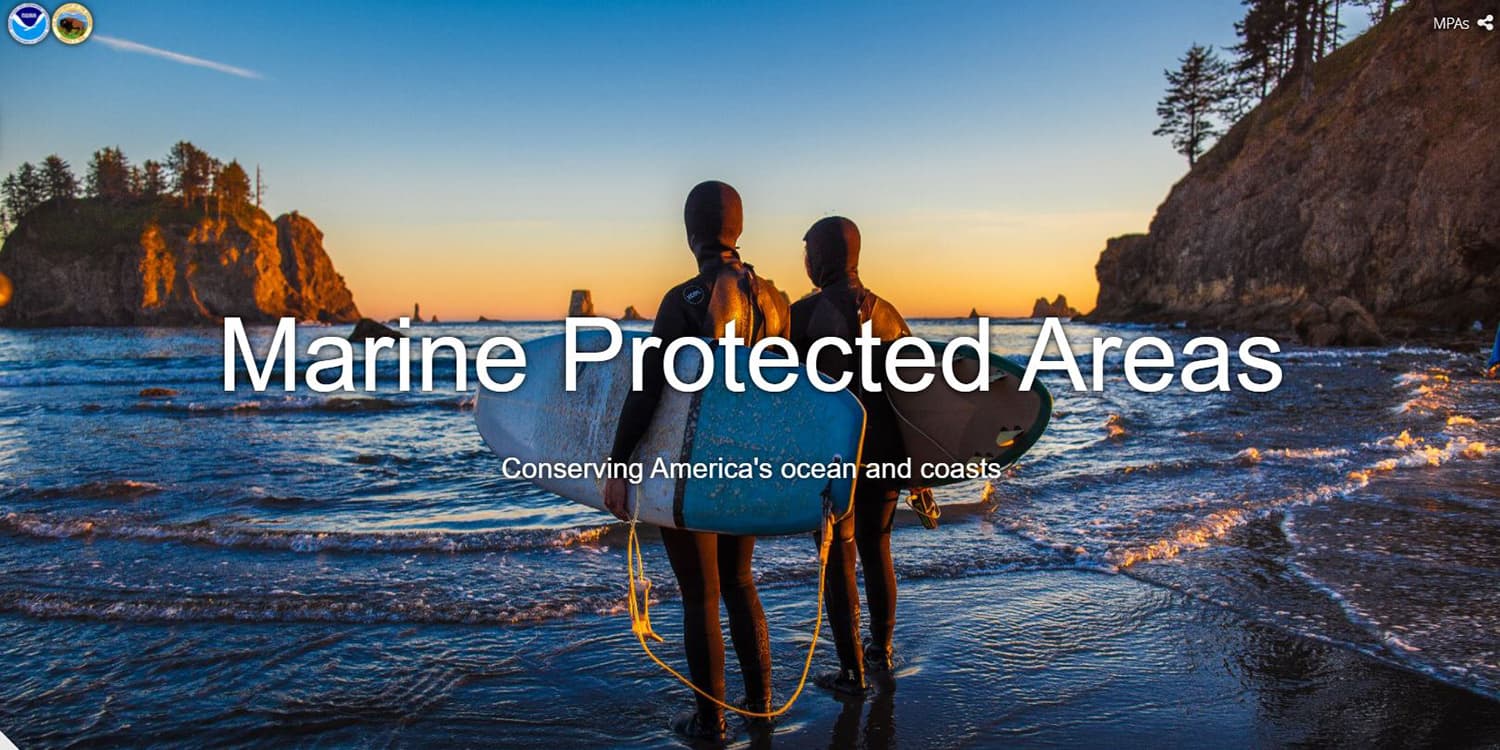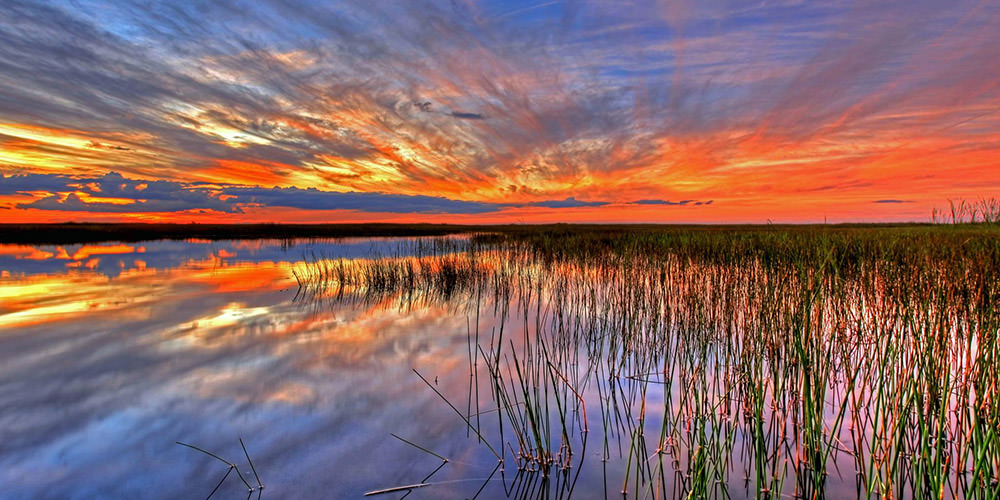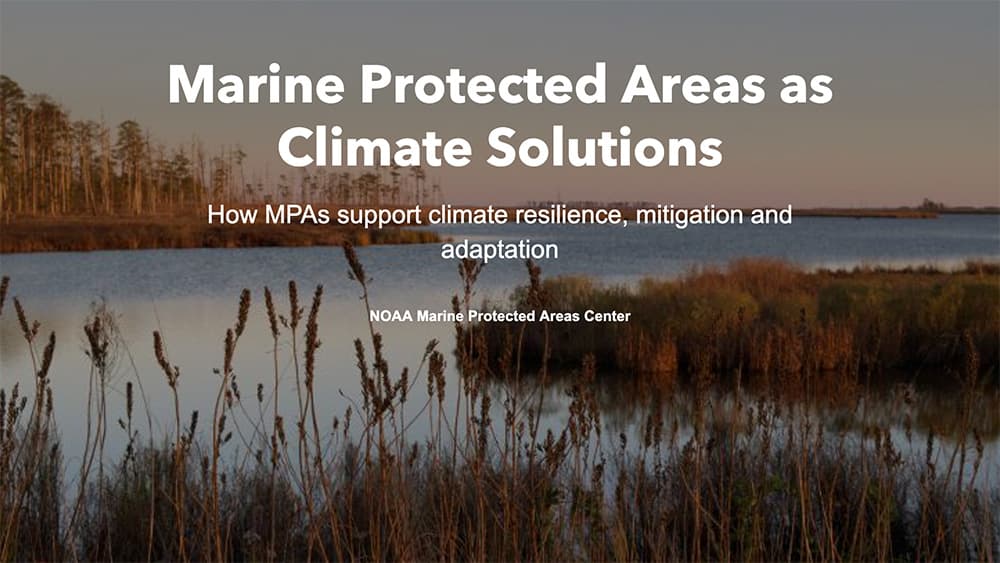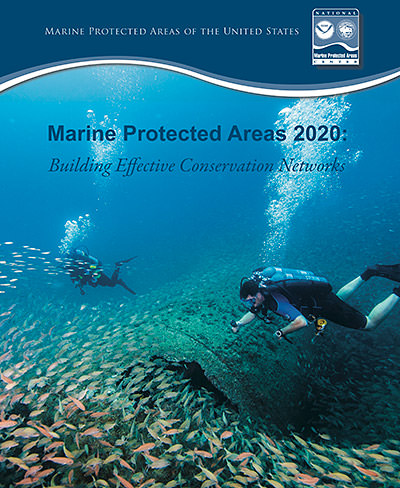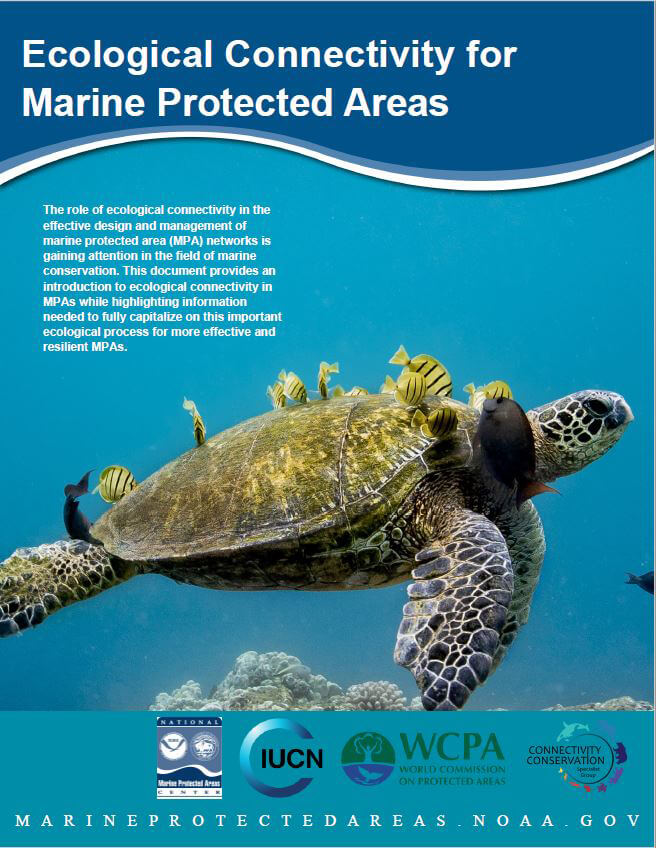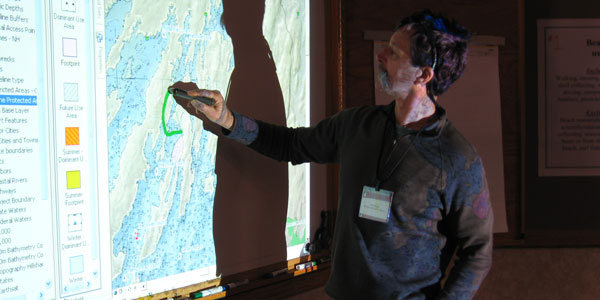National Marine Protected Areas Center
Make the Most of the Coast
Marine protected areas are special places set aside to help protect and restore marine life and habitats in the ocean and Great Lakes. These marine parks also provide countless opportunities to experience our ocean and coastal waters and explore our cultural maritime heritage. Check out this StoryMap to learn how you can enjoy visiting these amazing destinations.
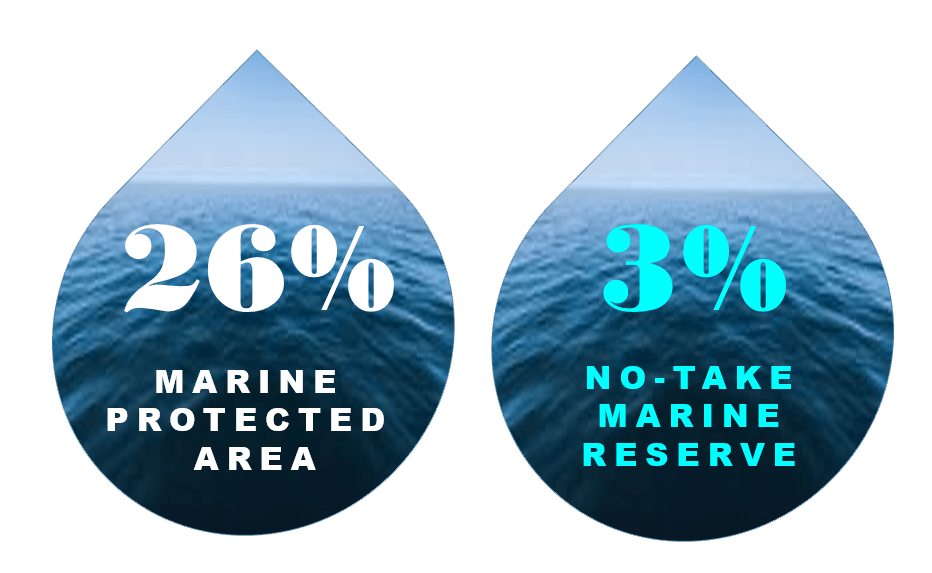
Coverage of MPAs in U.S. Waters
Marine protected areas cover 26% of U.S. waters. View, query and explore the MPA Inventory, a database that catalogs information on nearly 1,000 marine protected areas in U.S. waters.
Storymap: Climate Change and MPAs
MPAs provide long term protection to important marine and coastal ecosystems that provide a wide range of benefits, including as natural solutions to climate impacts through mitigation, adaptation and resilience, complementing essential efforts to reduce greenhouse gas emissions.
Marine Protected Areas 2020: Building Effective Conservation Networks
This report summarizes U.S. contributions towards six key aspects of successful marine protected area (MPA) networks. The U.S. has established nearly 1,000 MPAs (as defined by the International Union for the Conservation of Nature (IUCN)) to protect important places in our ocean, estuaries, coastal waters, and Great Lakes. Scientists and managers have identified the following characteristics for networks of MPAs to achieve conservation outcomes:
- Area protected
- Ecologically representative
- Ecologically connected
- Other effective conservation measures (that are not MPAs)
- Effectively managed MPAs
- Integrated into the wider seascape
Ecological Connectivity for Marine Protected Areas
The role of ecological connectivity in the effective design and management of marine protected area (MPA) networks is gaining attention in the field of marine conservation. This document provides an introduction to ecological connectivity in MPAs while highlighting information needed to fully capitalize on this important ecological process for more effective and resilient MPAs.
Managing Marine Protected Areas
Learn about how MPA programs are meeting the challenges of managing in a changing climate, conserving cultural heritage, and addressing ocean uses.
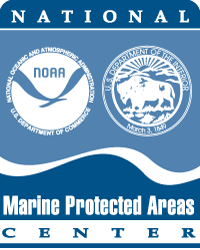 Marine Protected Areas
Marine Protected Areas